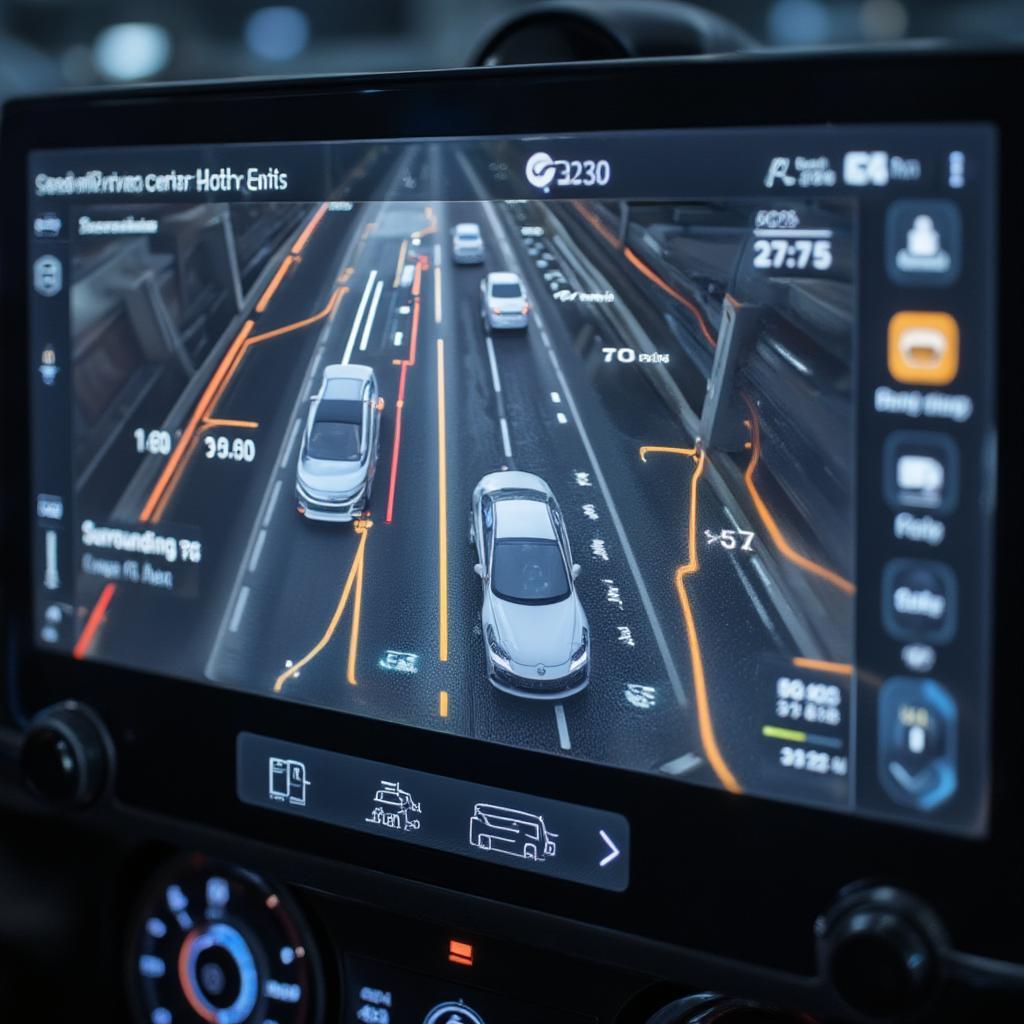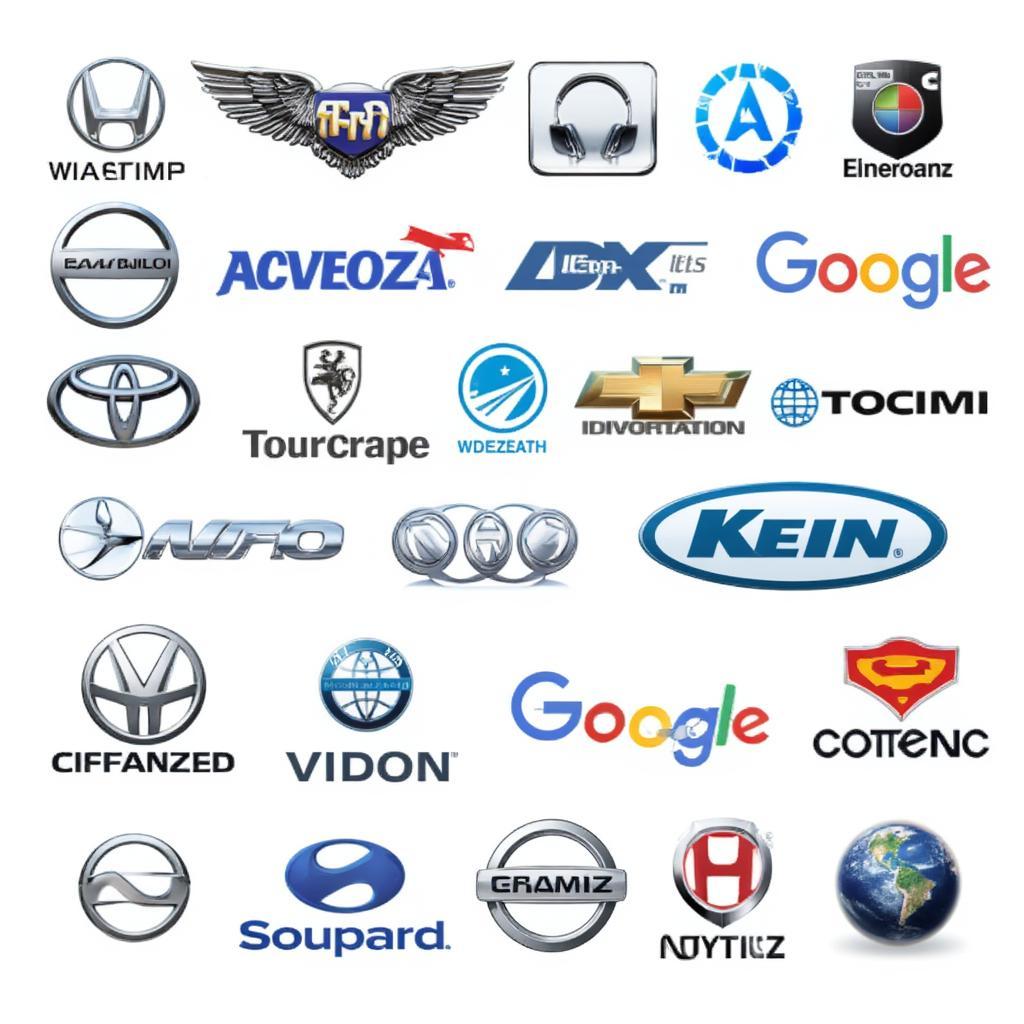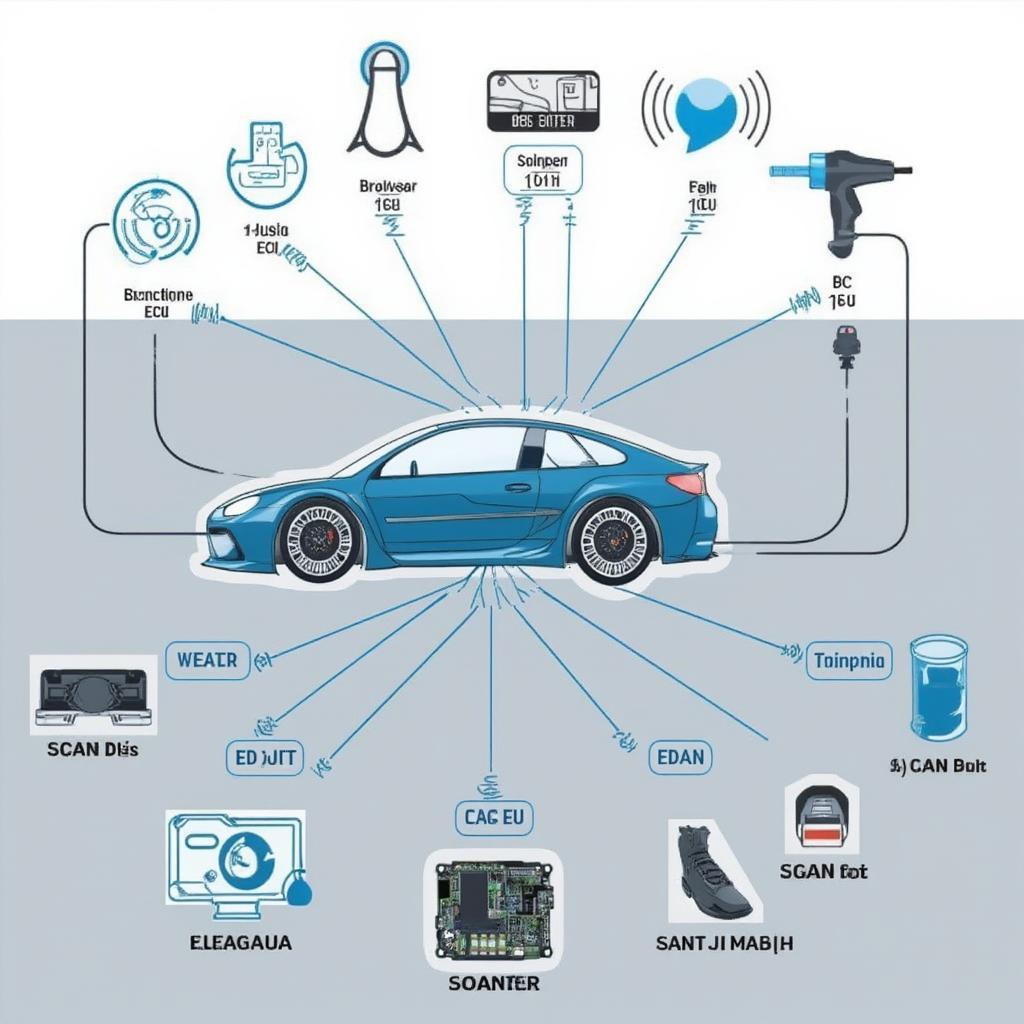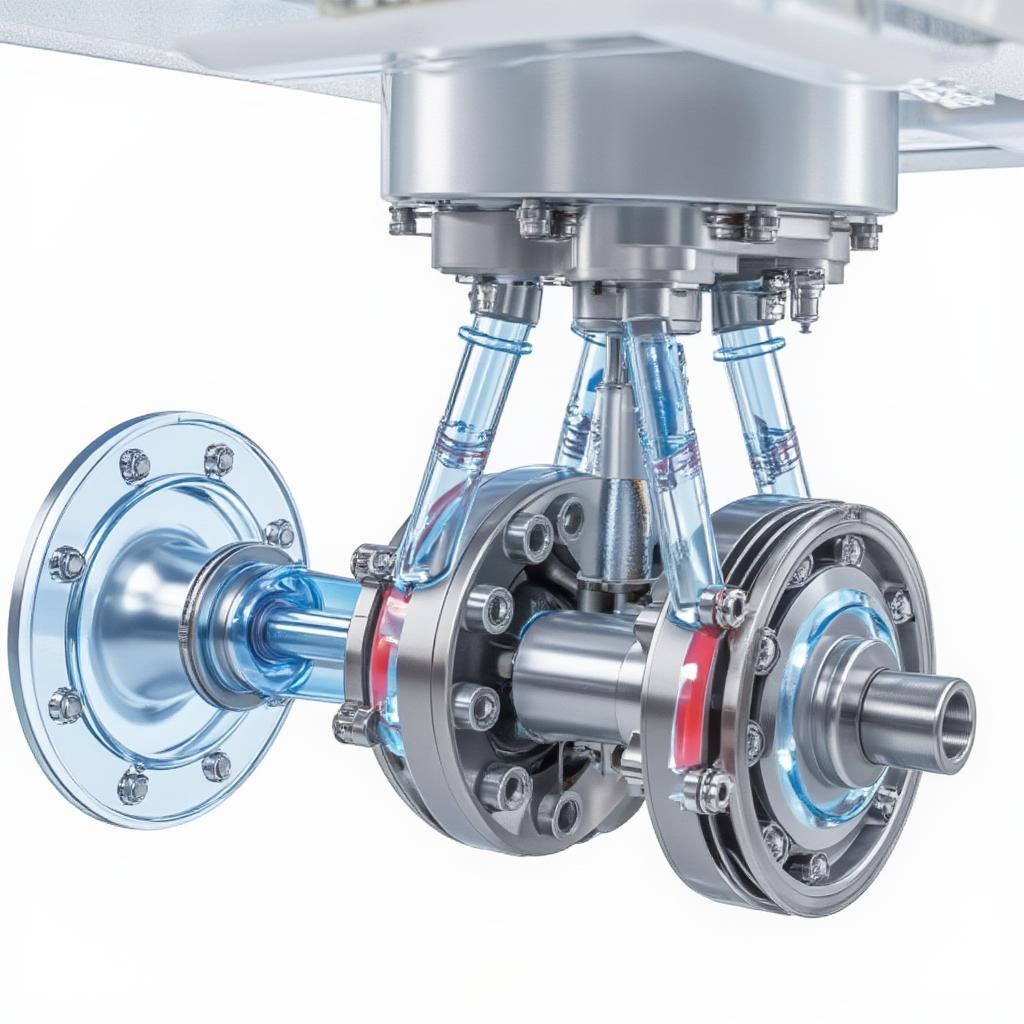Navigating the Future: Your Guide to Automotive Embedded Software Engineer Jobs

The automotive industry is undergoing a monumental transformation, driven by advancements in technology. At the heart of this revolution lies the crucial role of the Automotive Embedded Software Engineer Jobs. These professionals are the architects of the intelligent systems that power modern vehicles, from engine control units to advanced driver-assistance systems (ADAS). If you’re fascinated by the fusion of software and mechanics, then exploring a career in automotive embedded systems might be your next best move. This detailed guide will navigate you through the ins and outs of this exciting field.
What Exactly Does an Automotive Embedded Software Engineer Do?
An automotive embedded software engineer isn’t just writing lines of code; they are crafting the very nervous system of a car. These engineers develop, test, and maintain the software embedded within vehicles. They deal with real-time systems, often involving complex algorithms and control logic. Imagine the software controlling the car’s anti-lock brakes, or the system that handles automatic emergency braking – that’s the domain of embedded software engineers. They work with microcontrollers, sensors, actuators, and communication protocols like CAN and Ethernet, ensuring all components function seamlessly. The role also requires a deep understanding of automotive standards and safety regulations, like ISO 26262 which directly impacts the design and development process.
Here’s a breakdown of their key responsibilities:
- Software Development: Writing, debugging, and optimizing code for various automotive systems.
- System Integration: Ensuring seamless interaction between software and hardware components.
- Testing and Validation: Verifying software functionality, performance, and reliability.
- Requirement Analysis: Understanding and translating system requirements into software solutions.
- Documentation: Maintaining thorough records of development processes and code.
- Collaboration: Working closely with other engineers (electrical, mechanical) and stakeholders.
Skills Needed to Land Automotive Embedded Software Engineer Jobs
A successful journey into the world of automotive embedded software engineer jobs requires a combination of technical expertise and soft skills. Here’s a look at some of the must-have qualifications:
- Programming Languages: Proficiency in C, C++, and Python. Some roles might also require knowledge of Java or Assembly language.
- Embedded Systems Knowledge: A solid understanding of microcontrollers, microprocessors, and real-time operating systems (RTOS).
- Communication Protocols: Familiarity with CAN, LIN, Ethernet, and other automotive communication protocols.
- Software Development Tools: Experience with debuggers, compilers, and version control systems like Git.
- Automotive Standards: Understanding of ISO 26262 (Functional Safety) and AUTOSAR (Automotive Open System Architecture).
- Problem-Solving Skills: Strong analytical and troubleshooting abilities to identify and resolve complex issues.
- Teamwork and Collaboration: Effective communication and the ability to work within a multidisciplinary team.
“The automotive landscape is shifting rapidly, making it crucial for embedded software engineers to be adaptable and continuously learn. A deep understanding of the fundamentals, coupled with an eagerness to explore new technologies, is what sets apart the exceptional candidates,” notes Dr. Evelyn Reed, a Senior Software Engineer at a leading automotive technology company.
How to Prepare for Automotive Embedded Software Engineer Jobs
Getting into the competitive field of automotive embedded software engineer jobs demands a strategic approach. Here’s a roadmap to help you prepare:
- Education: Pursue a bachelor’s or master’s degree in Computer Science, Computer Engineering, Electrical Engineering, or a related field. Courses in embedded systems, real-time operating systems, and automotive electronics are incredibly beneficial. If you are keen to boost your specific knowledge, check out our automotive computer programming courses.
- Hands-On Projects: Work on personal projects involving embedded systems. This could range from simple microcontroller-based projects to more complex robotics or IoT applications. Practical experience will make your resume stand out.
- Internships: Secure internships in the automotive industry, focusing on embedded systems. This provides invaluable experience and networking opportunities.
- Skill Development: Continuously enhance your skills in relevant programming languages, protocols, and tools. Explore online resources, tutorials, and certifications.
- Networking: Attend industry events, connect with professionals on LinkedIn, and participate in relevant online forums. Networking can open doors to new opportunities.
- Resume and Portfolio: Create a strong resume highlighting your skills, projects, and experiences. Develop a portfolio showcasing your embedded systems projects.

Exploring the Different Areas Within Automotive Embedded Software
The scope of automotive embedded software engineer jobs is broad and includes various specializations. Here are some areas you could focus on:
- Powertrain Control: Developing software for engine control units (ECUs), transmission control units (TCUs), and battery management systems (BMS).
- Advanced Driver-Assistance Systems (ADAS): Working on algorithms for autonomous driving, lane keep assist, adaptive cruise control, and parking assist. This area is rapidly expanding and extremely demanding.
- Body Control: Developing software for lighting systems, door control, window control, and climate control.
- Infotainment: Working on software for in-car entertainment systems, navigation, and connectivity features.
- Networking and Communication: Developing software for in-vehicle networks and communication with external services.
- Functional Safety: Implementing software that adheres to the strict safety standards (ISO 26262) for critical automotive systems.
The Future of Automotive Embedded Software
The future for those in automotive embedded software engineer jobs is bright. With the rise of electric vehicles (EVs), autonomous driving, and connected cars, there’s an ever-increasing need for software professionals. As vehicles become more complex and intelligent, the demand for skilled embedded software engineers will only continue to grow. The industry is not just about coding; it’s about innovation and pushing the boundaries of what’s possible. We are talking about the transformation of the very fabric of our transportation system.
“The rapid pace of innovation within the automotive industry means that embedded software engineers will play an increasingly central role,” adds Mark Henderson, an Automotive Technology Researcher. “The skills required are becoming more complex, and the integration of AI and machine learning is opening exciting avenues for development.”

Why Choose a Career in Automotive Embedded Software?
Choosing a career in automotive embedded software engineer jobs offers several compelling advantages:
- Impact: You’ll be working on technologies that are transforming the world of transportation. Your work will contribute to a more connected, safer, and sustainable future.
- Innovation: The automotive industry is at the forefront of technological innovation. You’ll be working with cutting-edge technology and constantly challenged to push the boundaries of what’s possible.
- Growth: The demand for skilled embedded software engineers in the automotive industry is consistently growing, providing ample opportunities for career advancement.
- Variety: The field is diverse, offering opportunities to specialize in various areas, from powertrain to ADAS.
- Competitive Compensation: Automotive embedded software engineers are highly sought-after and enjoy competitive salaries and benefits.
- Intellectual Stimulation: The work is intellectually challenging, requiring you to solve complex problems and think creatively.
What Kind of Companies Hire Automotive Embedded Software Engineers?
The range of companies hiring for automotive embedded software engineer jobs is very diverse. These include:
- Automotive OEMs (Original Equipment Manufacturers): Companies like Toyota, Ford, BMW, Volkswagen, and Tesla directly employ embedded software engineers.
- Tier 1 Suppliers: Companies like Bosch, Continental, Denso, and Magna that develop and supply systems for automotive manufacturers.
- Technology Companies: Companies such as Nvidia, Google, and Qualcomm are heavily involved in developing software for autonomous driving and infotainment systems.
- Startups: Innovative startups in the automotive space are frequently looking for embedded software talent.
- Consulting Firms: Many consulting firms specialize in automotive software, offering numerous job opportunities.
- Research Institutions: Universities and research organizations also have positions for those working in embedded software.
To gain better insights into these companies, considering exploring our automotive electrical engineering courses.

Challenges and Considerations
While exciting and rewarding, automotive embedded software engineer jobs also come with their own set of challenges:
- Complexity: Automotive systems are inherently complex and require a deep understanding of both hardware and software.
- Safety-Critical Systems: Many automotive systems are safety-critical, meaning that even a small software error can have severe consequences. You have to be rigorous and precise.
- Time-Sensitive Nature: The automotive industry is rapidly evolving. Engineers must be able to adapt to new technologies and tight project deadlines.
- Continuous Learning: The field requires continuous learning and upskilling as technologies evolve at a breakneck pace.
- Collaboration Challenges: Effective teamwork and cross-functional communication are crucial, which can be complex across large teams.
- Rigorous Testing: The need for extensive testing and validation can be demanding but is essential.
Conclusion: Your Path to a Rewarding Career
In conclusion, a career in automotive embedded software engineer jobs offers a path to a technologically rich and rewarding career. It’s more than just coding; it’s about designing the future of transportation. With the right skills, preparation, and dedication, you can play a key role in developing the intelligent vehicles of tomorrow. The industry is booming, and the demand for talented professionals is stronger than ever. For those interested in pursuing such an exciting field, it may be worth exploring some automotive developer jobs or perhaps even automotive engineering technology jobs.
Frequently Asked Questions (FAQ)
What is the typical salary for an automotive embedded software engineer?
Salaries vary based on experience, location, and company size. However, you can expect a competitive salary, often above the median for software engineering positions. Entry-level positions can start around $70,000, while senior engineers can earn upwards of $150,000 annually.
What are the most in-demand skills for automotive embedded software engineers in 2024?
Key skills include proficiency in C and C++, knowledge of AUTOSAR and ISO 26262, expertise in real-time operating systems (RTOS), experience with CAN/LIN/Ethernet, and familiarity with ADAS development. The integration of AI and Machine learning are also increasingly in demand.
Do automotive embedded software engineers need to know about hardware?
Yes, a fundamental understanding of hardware is crucial. You’ll need to work closely with microcontrollers, sensors, and actuators. The ability to integrate hardware with software effectively is fundamental.
Is it necessary to have a master’s degree to get a job as an automotive embedded software engineer?
A master’s degree isn’t always a must, but it can provide you with a competitive edge and may open doors to more advanced roles. A Bachelor’s degree coupled with relevant experience and a strong portfolio can suffice.
What is ISO 26262? Why is it important in automotive embedded systems?
ISO 26262 is an international standard for functional safety in the automotive industry. It ensures that electrical and electronic systems in vehicles operate safely and reliably. Compliance with this standard is crucial for safety-critical systems.
What is AUTOSAR, and why should an automotive embedded software engineer know about it?
AUTOSAR (Automotive Open System Architecture) is a standard for the software architecture of automotive electronic control units. It provides a standard framework for developing software components, promoting code reuse and interoperability. Familiarity with AUTOSAR is highly valued by employers.
Are there opportunities for remote work in automotive embedded software engineering?
While some remote opportunities are available, many roles may require onsite presence, particularly for testing and integration activities. However, hybrid models are becoming more common.
How can I stay up-to-date with the latest trends in automotive embedded software?
Follow industry publications, attend conferences and workshops, participate in online forums, and take advantage of online learning resources. Continuous learning is essential for staying relevant in this rapidly evolving field.
What kind of projects can someone aspiring to be an automotive embedded software engineer work on?
Examples include creating a small robotic vehicle controlled by a microcontroller, implementing a CAN communication protocol, developing a simple ADAS function in simulation, working with a Raspberry Pi or Arduino to simulate embedded systems or developing a basic RTOS project.




